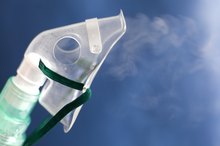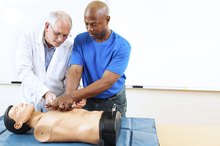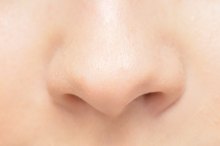CPAP stands for Continuous Positive Airway Pressure, also referred to as noninvasive ventilation 4. CPAP is used by hospitals and emergency medical services to help patients breathe. According to EMS1.com, patients wear a special mask that sends air into the nose and down the windpipe. This stream of air creates positive pressure, holding the airway open. However, CPAP use is not advised in some emergencies.
Pneumothorax or Penetrating Chest Trauma
The book "General Critical Care" notes that the high-pressured air from CPAP ventilation can cause a patient with a piercing chest injury to develop a collapsed lung, or pneumothorax 3. An existing lung collapse could escalate into a tension pneumothorax, a life-threatening condition where the air under pressure enters the space around the lungs, compressing the lungs and the heart.
Inability to Protect Airway
What is a Patent Airway?
Learn More
A 2008 article published in "International Journal of COPD” notes that CPAP requires a patient to be alert and able to protect the airway by coughing up mucus and having an active gag reflex, as well as be able to control breathing -- breathing deeper or slower if asked. A stroke patient, or someone who is unconscious or has an unstable heart condition, may not be able to do so.
Stomach Surgery or Bowel Bleeding
A 2006 article published in the "Journal of Emergency Medical Services" cautions about using CPAP if the patient has a history of upper bowel bleeding or stomach surgery 2. The pressurized air can be forced into the stomach, causing the stomach to inflate. This swelling of the stomach may tear healing tissue or cause vomiting into the CPAP mask.
Inability to Clear Mucus
Complications of CPR
Learn More
The "Journal of Emergency Medical Services" article also notes that patients with high amounts of lung mucus or who are suspected of having pneumonia, a lung infection, should not receive CPAP. The air pressure may push the mucus deeper into the lungs, spreading the infection and making deep suction difficult.
Low Blood Pressure Secondary to Blood Loss
"General Critical Care” points out that a patient’s blood pressure could drastically drop due to the effects of CPAP on the heart and blood vessels 3. Patients with already low blood pressure caused by blood loss may go into shock if CPAP is used. Shock is a life-threatening condition caused by extremely low blood pressure.
Related Articles
References
- EMS1: A Look at CPAP for EMS
- "General Critical Care"; H. Horst; 2002
- "International Journal of COPD"; Noninvasive Positive Pressure Ventilation in Acute Respiratory Failure Due to COPD vs Other Causes; Ritesh Agarwal; 2008
- Mercieca L, Pullicino R, Camilleri K, et al. Continuous positive airway pressure: is it a route for infection in those with obstructive sleep apnoea? Sleep Sci. 2017;10(1):28-34. doi:10.5935/1984-0063.20170005
- Yu CC, Luo CM, Liu YC, Wu HP. The effects of heated humidifier in continuous positive airway pressure titration. Sleep Breath. 2013;17(1):133‐138. doi:10.1007/s11325-012-0661-y
- Dokuyucu R, Gokce H, Sahan M, et al. Systemic side effects of locally used oxymetazoline. Int J Clin Exp Med. 2015;8(2):2674-8.
- Zamora TS, Martine PM, Verde Colinas CM, et al. Infectious complications associated with the use of CPAP in patients with sleep apnea-hypopnea syndrome. Eur Respir J. 2012;40(56):P3833.
- Su VY, Liu CJ, Wang HK, et al. Sleep apnea and risk of pneumonia: a nationwide population-based study. CMAJ. 2014;186(6):415-21. doi:10.1503/cmaj.131547
Writer Bio
Stacey Anderson began writing in 1989. She published articles in “Teratology,” “Canadian Journal of Public Health” and the "Canadian Medical Association Journal” during her time in medical genetics studying birth defects. She has an interest in psychology, senior health and maternal and child health. Anderson holds a Bachelor of Science in psychology with a minor in biology from the University of Calgary.









